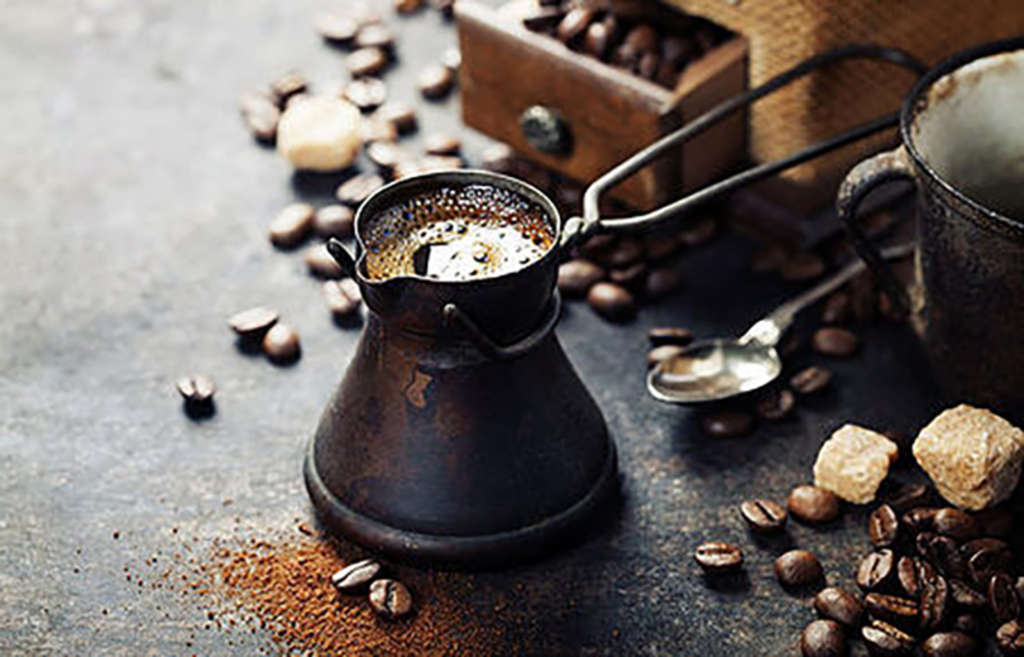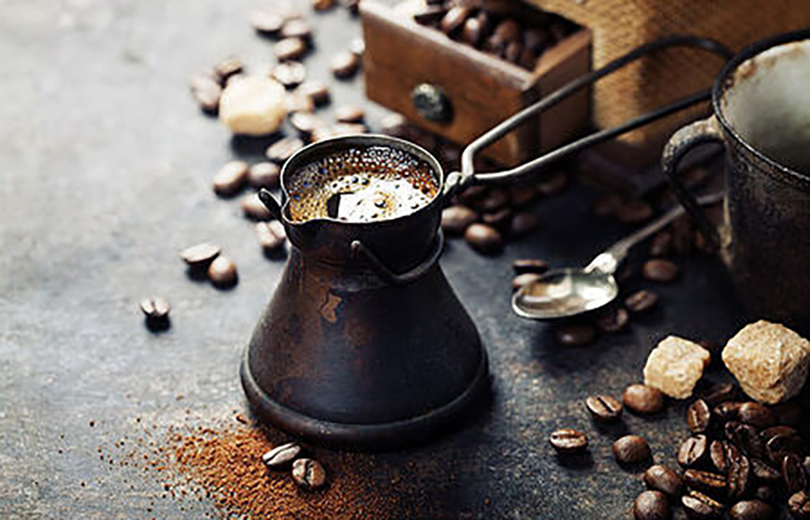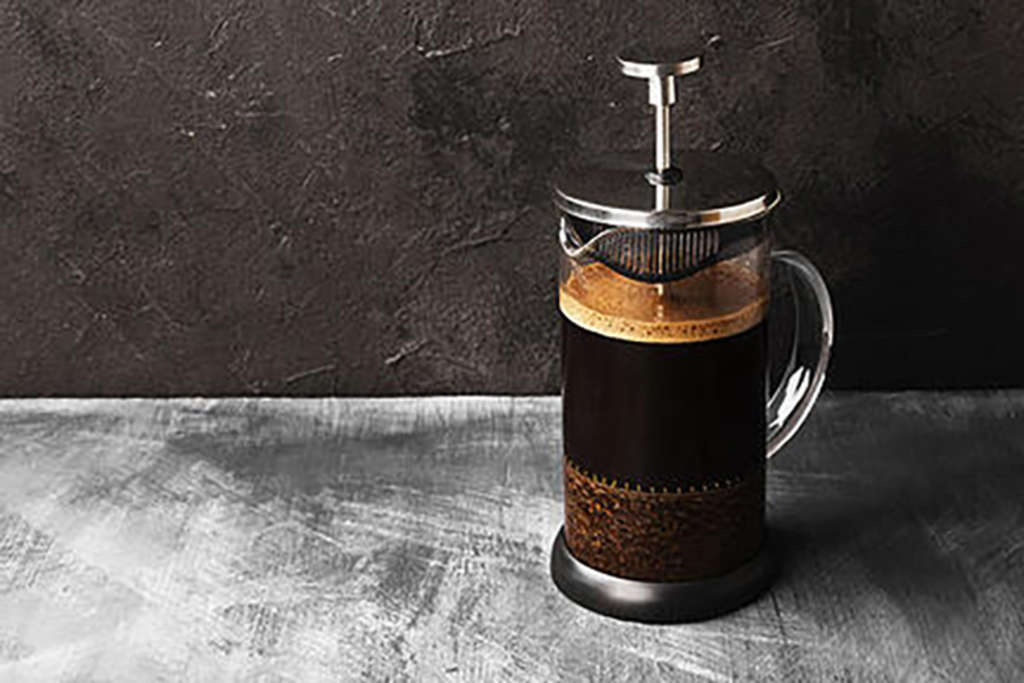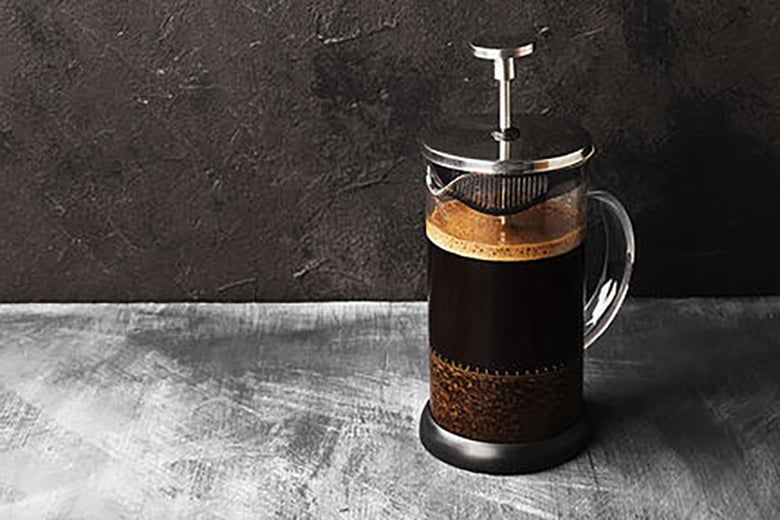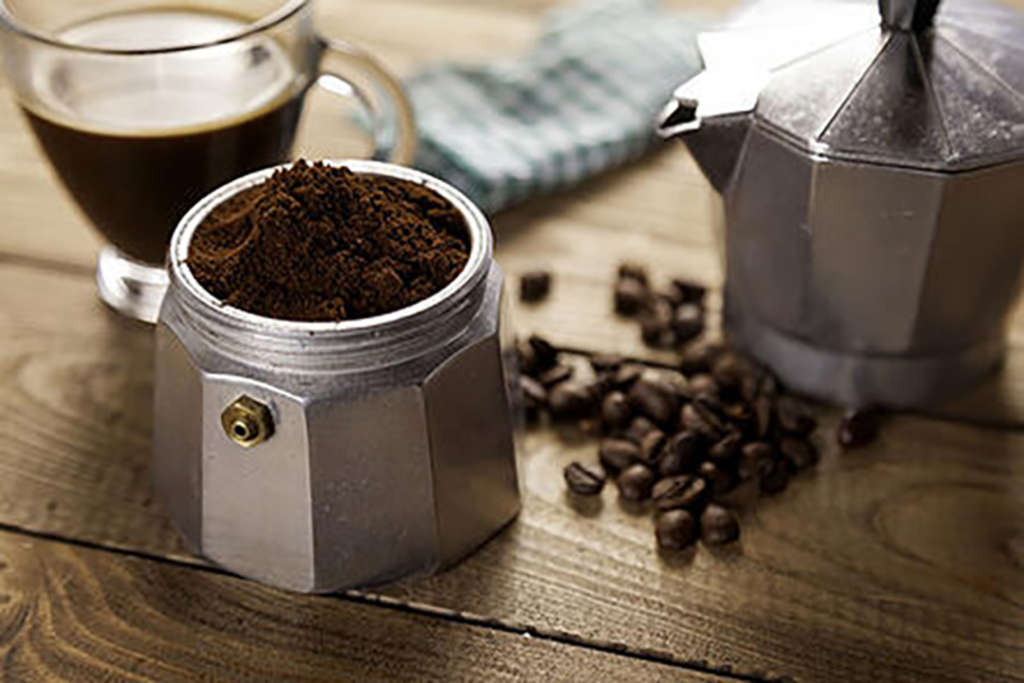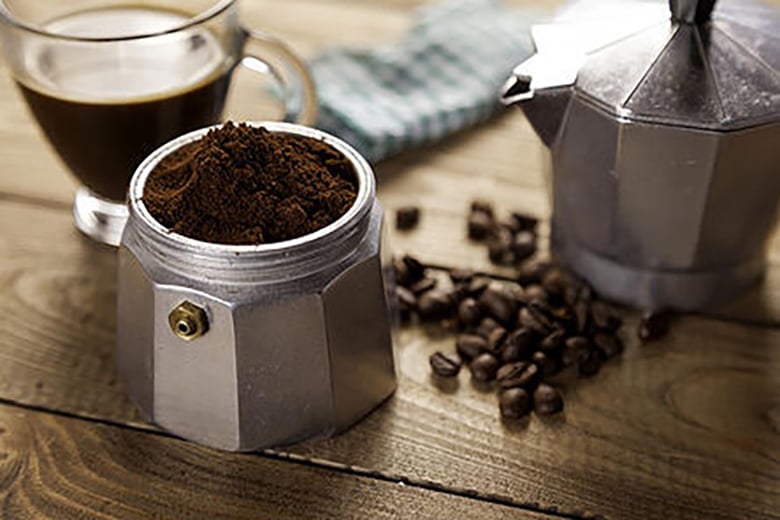Stimulating coffee facts with EHL’s Alain Berruex

Coffee - so much more than a drink - more a way of life. David Lynch is famously quoted as saying that "even a bad cup of coffee is better than no coffee at all". While the amount that is either good or bad for your health is still unresolved, coffee remains the most popular beverage in the world with more than 400 billion cups consumed each year. More important than the sun rising in the sky, once the taste and kick are floating around in your blood system, it seems that the day is ready to start. Senior lecturer in Food & Beverage Management, EHL's Alain Berruex takes us through coffee's stimulating journey.
Coffee origins
The first coffee trees were found in Ethiopia on a high plateau in Kaffa province, close to the Great Rift Valley. Legend says that coffee was discovered by Kaldi, a young shepherd, who saw his goats eating the berries and noticed them getting very lively. So he tried it, felt stimulated and revitalized, and brought his discovery to some Sufi monks living in Ethiopia. Originally from Yemen, the monks took the berries, trees and habit of drinking coffee back to their country.
The port of Al-Makha (Mocha) in Yemen is essential to the spread of coffee. Beans were imported from Ethiopia and then sent to the Red Sea to sacred Muslim cities, such as Mecca, Medina and Jeddah. Thanks to the pilgrims visiting those cities and returning home, coffee quickly spread to all the Arab countries and become a daily drink for Muslims. Coffee helped them stay awake and focused during night prayers. They gave the name 'Arabica' to the bean.
At that time, merchants would walk the city streets with pushcarts and sell coffee to passersby. People used to stop, have a coffee and start chatting. This created the convivial, social link between people and the ritual of drinking coffee. Then coffee became so important that the first coffee houses opened simultaneously in two very important cities, Damascus and Aleppo, in present-day Syria. Gradually, coffee spread to other great cities, such as Istanbul, Cairo, Beirut and so on.
The first Europeans to trade coffee with the Arabs were the famous Venetian traders. They imported coffee drinking and spread it throughout Italy and Europe. The first European coffee house opened in Venice between 1645 and 1683. When coffee arrived in Europe, it was considered a luxurious, expensive and rare product. The Dutch were the first Europeans to grow coffee. They started in Sri Lanka, bringing coffee trees to Indonesia on Java Island.
The French, who also got their hands on a few coffee trees, started to grow coffee in Martinique. Then the French Governor offered a plant to the British Governor of Jamaica. Jamaica started to produce the famous Blue Mountain Grand Cru and subsequently, the British participated in the spread of coffee around the world.
The main producers are now located in what we call the coffee belt, between the Tropic of Cancer and the Tropic of Capricorn. Brazil is the main producer in terms of quantity per year with approximately 33% of worldwide production. It is followed by Vietnam with 16%, Colombia and Indonesia with 7%.
Types of beans
Up to 124 species of the Coffea plant are known, but not all of them are edible. Only a few of them are grown to produce coffee, specifically 'Coffea arabica' that gives us the sweeter tasting Arabica bean and 'Coffea canephora' that produces the stronger, higher caffeined Robusta bean.
Arabica is much more delicate than Robusta. Delicate first in terms of growing: the tree cannot be exposed to too much sun, it has to grow in high altitudes and needs rich soil, such as old volcanic soils. We can feel it in the taste, Arabica beans have aromatic, fruity and delicate notes, and make up for between 60-80% of the world's coffee production.
Conversely, Robusta trees are cheaper and easier to grow. They have deeper roots in order to get their nutrients and don't need high altitudes, just a lot of sun. In terms of taste, Robusta has earthy, strong and slightly bitter notes. Most of the time, the two beans are blended so to achieve the right balance between the delicacy of Arabica and the strength of Robusta, with a respective ratio of 80/20 being the most popular.
The fruit of the coffee tree is called a cherry. When ripe, it is opened and two beans are found in it. The beans are wet, sticky and soft. They need to be cleaned, washed and dried. After this process they are called green beans, or green coffee. This is how the beans are sold in the market, because it is easier to preserve them. Finally, the beans need to be roasted to arrive at the beautiful brown/black color we all know and to develop their aromas. Studies have shown that a green coffee bean contains approximately 200 aromatic molecules. The same bean can show up to 800 aromatic molecules after roasting!!
Essential coffee tips
- The coffee itself. Make sure it is well-sourced and high quality. It's good to research the Arabica/Robusta ratio that suits you best.
- Grinding size. Depending on what equipment you are using, a smaller grind usually transmits a better flavor.
- Infusion time. The amount of time the coffee is in contact with the water will impact the body and aroma. For a fuller flavor, let the coffee sit a while.
- Coffee/water ratio. This affects everything about your cup of coffee. A higher coffee ratio can produce a prestigious, densely inky Ristretto, whereas a watery 'Caffé Lungo', considered an anathema among most Italians, looks like dull ditch water.
- Water flow. This refers to the speed with which the water hits the coffee. Water that's slowly injected into the coffee is better for taste and transmitting the coffee's deepest personality.
- Water quality and temperature. Hard water that's full of limescale will negatively alter the way the coffee molecules are released. The softer the water, the better the taste. Rainwater is supposed to be the best! It's useful to remember that the best water temperature for coffee is between 88° and 92°, or just under boiling.
Some popular coffee brewing methods
Boiling. Also known as 'decoction' (or 'cowboy coffee' because it's so easy to make). Ground coffee is placed in cold water and is slowly brought to a boil. Then you can either filter it or let the grounds settle at the bottom. Popular in countries like India, Vietnam, Turkey and Cuba, where exotic extras are often added (e.g. very sweet condensed milk or charcoal for an extra smokey flavor). The best tip here is not to over boil the water, keeping it around 90 degrees will avoid any bitterness in the taste, and do not stir the sediments at the bottom.
Immersion. Often associated with the French Press coffee maker. This is the coffee experts' favored method because all the aromatic molecules are given time to open up and expand smoothly and naturally at their own pace. Like tea, water is heated - (as usual, just below boiling is best) - then added to the coffee and left to brew for 2 to 5 minutes. After stirring, the famous 'pressing down' then occurs which serves to remove the coffee grounds and tiny particles. The press also serves to squeeze out all the flavor and character from the coffee, ensuring all essential oils and antioxidants are evenly diffused.
Pressure. Often associated with the 3 piece Moka pot, (also known as the 'stovetop espresso') and the typical espresso machine we see in Italian bars. With the Moka pot, water heats in the bottom section creating steam that rises and, under pressure, shoots up the funnel to the middle section which holds the coffee grounds. This makes the coffee wet and starts to release its aromas. After a few seconds, the brewed concoction is then sucked up into the top section from which the coffee is poured. Unlike the French Press, here it's best to use slightly coarser coffee grounds. The espresso machine applies much more pressure to the process thanks to its motor-driven apparatus which is responsible for the light, frothy 'crema' around the perimeter of your cup of coffee.
Storing coffee
Purists argue that ground coffee is something that should never be stored, it should be consumed ASAP once the beans have been freshly roasted and ground. However, back in the real world: air, moisture, heat and light are the things to be avoided when it comes to storage.
It's best to keep coffee in an opaque, airtight container at room temperature. Surprisingly, the fridge is not the best place for coffee in any form, ground or whole bean, even when sealed. It is simply not cold enough to keep your coffee really fresh, (it's better off in the freezer), and because coffee works as a deodorizer, it will absorb all the aromas in your fridge- which will definitely have a negative impact on your morning cup!
It is recommended not to keep roasted coffee beans for more than one month. It is better to regularly buy freshly roasted coffee in small amounts and do your grinding at home just before brewing. This way, your coffee will taste better and you will be more tempted to try out new varieties.
New trends, flavors and crazy twists
- Latte Art. Finally big in Europe where it has arrived later than Australia, New Zealand and North America. It's a method of preparing coffee by pouring microfoam into a shot of espresso and creating a pattern or design on the surface of the latte (milk). It brings a bit of pomp and technique to coffee making.
- Superfood coffee. Coffee with vital fungi (reishi, maitake, hericium), or the addition of special spices like curcuma, lucuma or maca (Peruvian ginseng).
- Goth Latte. Latte art made with activated charcoal that produces a black foam that looks very impressive and is supposed to have detoxifying properties.
- Egg coffee. Popular in Vietnam, almost a dessert it's so sweet and nutritious, similar to a liquid Tiramisù.
- Cascara coffee. Taken from the dried skins of the coffee cherry, when brewed it's somewhere between coffee and tea, tastes sweet and fruity (like hibiscus) and contains far less caffeine.
- Civet cat coffee. The world's most sought-after and expensive coffee that actually comes from the digestive tracts of the Indonesian kopi luwak critter (Paradoxurus Hermaphroditus). With their excellent sense of smell, the luwaks eat only the ripest and sweetest Arabica coffee berries which then pass through the animal's digestive system. The enzymes in the gut break down the bitter proteins in the bean, starting the fermentation process and giving Kopi Luwak coffee its distinct smooth and syrupy like texture. The undigested coffee berries are sent out as clusters of excrement which are then collected by the farmers before being thoroughly washed, sun dried, roasted and prepared for shipment. Expect to pay up to $100 per cup!
Last word
"Just remember that a real coffee maker is no more than a crazy scientist!" - Alain Berruex.
Further coffee reading:
Best coffee machine: our 11 top buys for your favorite brew
Looking For The Best Way To Make Coffee? Here's A Complete List.
Coffee Trends 2020 - Year of Dalgona, Specialty Coffee and Ready-to-Drink
EHL Hospitality Business School
Communications Department
+41 21 785 1354
EHL


